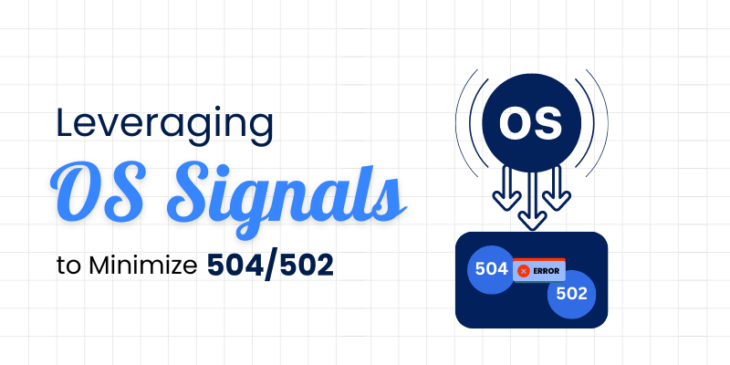
In today’s digitally connected world, offering reliable and uninterrupted service is important. The fact is that the strongest systems may encounter errors, indicating that they’re not immune to errors like displaying HTTP status codes like 504 (Gateway Timeout) or 502 (Bad Gateway). These mistakes may also create problems for end users, hurt reputation and ruin the business performance indicators. The other means that can be adopted to ensure that these errors are minimized is by developing efficient OS signals. This blog provides an in-depth look into operating system signals and how they can be implemented to minimize 504/502 errors in business infrastructure. So, let’s begin!
Understanding 504/502 Errors
Before diving into solutions, let’s understand the nature of 504 and 502 errors:
502 Bad Gateway
This error occurs, in case, some server on the internet gets an incorrect response from another server. It states that a server acting as a gateway or the server being the proxy, mistakenly received an invalid response from the prior server.
504 Gateway Timeout
This problem occurs when the proxy or gateway server does not receive a timely response from an upstream server within a specified time duration.
These kinds of errors indicate a lack of communication and breakdowns between the servers. Such failings often point to network congestion, some server issues, or improper set-up of proxies.
The Role of OS Signals
OS signal is a process used in Unix-like operations systems to communicate with running processes. Signals are capable of controlling the execution of different processes such as terminating, stopping or even restarting the process. Meticulous analysis and successful implementation of OS signals can be extremely helpful in improving system reliability and resilience.
Exploiting OS Signals (OS) to Minimize Errors
Here’s how teams can leverage OS signals to minimize 504/502 errors.
Timeout Handling
Acute managing times-outs can help in reducing times when 504 errors appear. OS signals such as SIGALRM can be used to set a timer for operations that may not get completed within a set timeframe. The timeout handler could be invoked if the operation time extends beyond the specified time. This special handling, hence, can help to navigate the situation nicely.
Graceful Shutdowns
By using signals like SIGTERM, the ease of instructing applications to finish ongoing tasks before shutting down, is enabled. This can avoid 502 errors by delivering the most clear connections, as there will not be any abrupt disruptions in connections.
Resource Management
By monitoring the available system resources and ensuring their utilization within the set efficiency standards, it is possible to protect the server from crashes that result in HTTP status 502 errors. Make use of signals like SIGUSR1 or SIGUSR2 to trigger custom resource management routines which may include scaling down worker processes or reallocation of resources for dynamic scaling.
Error Recovery
Implement highly robust error recovery mechanisms that utilize signals and embed algorithms that can detect & recover from masquerading errors without human intervention. For instance, in situations where a 502 error is signalled, in such a scenario, a signal handler may start the retry loop or assign another server to ensure service continuity.
Summary
Leveraging OS signal effectively reduces 504/502 errors and helps to build a steady infrastructure with minimal failure. By properly understanding the nature of these errors, adopting the right techniques in signal handling and following the best practices, teams can easily establish a system that is more fault-tolerant and which delivers what every user wants – a consistent and reliable service.



